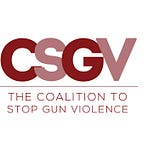Addressing the “how” in suicide prevention
During National Suicide Prevention Month, much of the conversation tends to center around the reasons why individuals take their own lives. This is legitimate — when it comes to suicide, the “why” can be haunting and perplexing. It can also be a source of regret, prompting feelings of guilt, missed warning signs, opportunities to intervene. Indeed, there are frequently underlying problems that precede suicide, and professionals and/or loved ones can often address these problems before tragedies occur. The “why” is important. But in discussing suicide prevention, it is also important to address how individuals die by suicide — the methods they choose and how to limit access to highly lethal methods during suicidal crises. Specifically, it is important to address the relationship between suicide and firearms.
There is a clear link between access to firearms and suicide. Research has found that access to a gun in the home is a strong risk factor for suicide. Guns account for half of all suicides and are the most lethal method, with about nine out of ten firearm suicide attempts resulting in death. By contrast, attempts by poisoning/overdose — another common method — result in death less than two percent of the time.
The low survival rate associated with guns means that individuals who use guns to attempt suicide rarely get a chance to reconsider — a chance most suicide attempt survivors ultimately value. Nine out of ten people who survive a suicide attempt do not go on to die by suicide. They get the help they need. They choose to live, to thrive, to help others in crisis.
Suicide is not inevitable. And we should not treat it as such. Rather, suicide is usually an impulsive act in a brief moment of crisis; often, the period of highest risk lasts only minutes. By separating at-risk individuals from firearms during these moments, we can save lives. Successful suicide prevention policies do just that. One such policy is an extreme risk law, which allows family members and/or law enforcement to petition a court to temporarily remove guns from at-risk individuals and prevent them from purchasing additional guns. By reducing access to firearms during a period of heightened risk, extreme risk laws can protect suicidal individuals.
Another policy that would allow at-risk individuals to protect themselves from firearm suicide is voluntary self-prohibition. Voluntary self-prohibition laws would allow people to voluntarily put their own names on a no-buy list, putting a barrier between themselves and firearms. This policy would provide agency to people who recognize their own risk for suicide and give them the option to anticipate and prepare for suicidal crises, which are sometimes recurrent. This concept mirrors several states’ “self-exclusion” laws, which allow individuals to limit their own access to casinos.
In addition to being practical tools, voluntary self-prohibition laws challenge the stigma associated with suicidality by acknowledging that the people directly affected by suicidal crises can be rational and involved in their own safety planning. Being suicidal does not make one “crazy,” and having a history of suicidality does not preclude someone from being able to make informed decisions about their own wellbeing.
Though voluntary self-prohibition is a newer firearm suicide prevention tool, it echoes many of the principles of extreme risk laws. Both tools work by putting time and space between individuals in crisis and guns. But laws aren’t the only firearm suicide prevention tools available to us. In fact, open dialogue is among the most powerful tools we have. Friends, family members, and healthcare providers can help prevent suicide by talking with individuals in crisis and limiting firearms access during times of high risk. Specifically, they can do this by openly asking about suicidal thoughts, feelings, or intentions, determining whether the individual has access to guns, and working together to find safer storage options for firearms (which often entails removing them from the home) until a suicidal crisis has passed.
We all have a role to play in preventing suicide. Whether you are a suicide prevention policy advocate, know someone who is at risk for suicide, or have experienced suicidality yourself, we all have a stake in stopping these tragedies. We know suicide is preventable, and we know lives are on the line. During National Suicide Prevention Month and throughout the year, we must commit to addressing all aspects of this national epidemic — the who, what, when, where, why, and — perhaps most importantly — the how.
